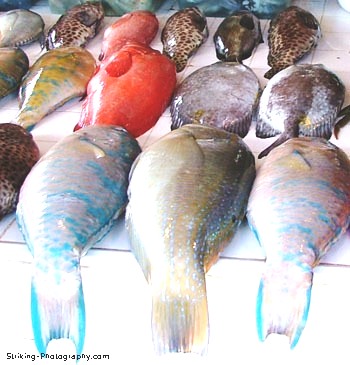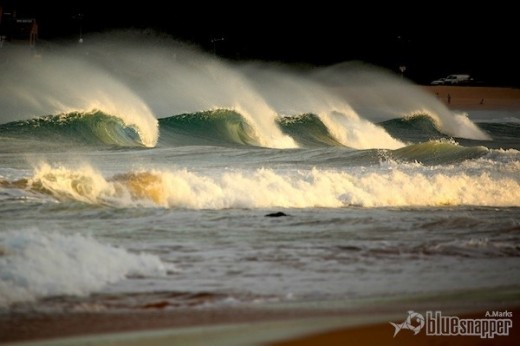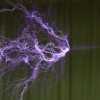Be your own fishfinder Part Two
SALWATER: INSHORE AND SURF

Here is a great example of "wave breaks" fish will hang out between the waves and in the "curl" or "troth" of the wave.

NATURES GIVEAWAYS
In this segment, I will show you what to look for to find were fish are plentiful.
Like I said in part one, a sure sign that fish are present, is the abundance of sea birds. The birds do not haft to be excited or feeding. They may have already fed, or are waiting for the next school of bait-fish to swim by. If you find lots of birds, there is a good chance you will find fish. Here is my Top Ten list for birds to look out for if you are search for a place to fish. This is for both salt and freshwater.
1. Osprey
2. Sea Galls
3. Bald Eagle
4. Brown Pelican
5. Cormorant
6. Blue Haring
7. Snowy Egret
8. Stork
9. King Fisher
10. Loon
Signs in the waves
Next, I would like to deal with Surf Fishing, one of my favorite forms of fishing. At first glance, the ocean looks about the same. Endless waves, and miles of sand, so were does one decide to make your cast? Well, the first thing I look for is my old friends the birds, no birds? No problem! If you know what you are looking for, there are plenty of signs all around you. One of the most difficult signs to locate; is the slight changes in wave formation. These are what are often called the “breaks,” “shoulder” “troths” and “Heads.”
The best way to describe these changes is to show you. The picture above shows some great surf! Not only is it a great picture, it shows an area with tremendous fishing opportunity! Any were you cast in the general area shown in the photograph has good potential for finding fish.
The first thing I look for when I study the waves is a break in the white caps. This break signifies a calmer area in the wave movement. Some surf fishermen call this; the “head” with the whitecaps on either side are known as “shoulders.” This of course, would mean that the sections heading back directly towards the beach can be look at as “the neck.” Fish seek out these breaks since they are natural shelters against the surf. These areas generally are caused by sand bars and fish will hide at the edge of the sand bars waiting to waylay there prey.
Another aspect of observing waves, is locating a “troth” which is parallel to the shore between the curl of the first wave closes to shore. Fish will often “troll” these troths looking for food. If you start, observing these sighs and applying them, I think you will be happy with the results. When fishing in the ocean, be it on shore or in deep water, be aware of a change in the color of the water. When the water changes from green to a dark blue, you know you are entering deeper water. Right on the edge, of the color changes is often productive.
Clues on the beach.
You can discover a lot of secrets of the ocean by looking at the beach. Study how it is shaped and what kind of debris you find on it. What I like to do is scout out a section of beach at low tide so I can see what kind of seaweed, shells and rocks are prevalent. This will tell me what kind of bottom I am dealing with, wither there is a lot of rocks and an idea of what kind of shellfish are in that area. This is real evident after a good storm that has dislodged material from the ocean floor. It is usually true were the ocean floor has Coal Reefs, lots of rocks or other structure; you will also locate an abundance of fish and other sea life.
Another thing to be aware of is what kind of beach you are on, is it flat, or does it slope towards the water? Does the bottom drop off suddenly, or does it stay shallow close to the shore? I always keep a lookout for any changes on the beach, like tide pools, large rock formations, jetties, waterways, or were rivers run into the ocean. Sand bars and docks are also fish attractants. The main rule is, were there is structure there are fish. This rule applies to any body of water, salt, brackish or freshwater. Another rule that is true in any type of water is that sudden changes in water deaths will most likely hold fish.
I want to deal with the perception that when fishing in the surf you haft to cast out past the breakers to catch sizable fish. This is false for many types of fish can be caught very close to shore and in shallow water. On my next hub on this subject, we will take look at freshwater situations. You will find a lot of similarities, with salt and freshwater, for fish are fish no mater were they live.








